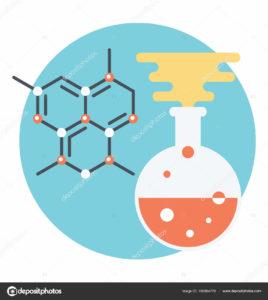Molecular Formula
A molecular formula consists of the chemical symbols. And it contains the constituent elements and numeric subscripts describing the number of atoms of each element present in the molecule. It is a way of presenting information about the chemical proportions. The chemical formula is not a chemical name, and it contains no words. Although a formula may imply certain simple chemical structures, it’s not equivalent to a full chemical molecular formula. In this article, we will learn the molecular formula, its various properties and solved examples.
Molecular Formula
Molecular Formula=n(Empirical formula). It gives the type and number of atoms of every element present within the molecular compound. The formula will always be some integer multiple of the formula. It represents the only whole-integer ratio of atoms during a compound. The formula for a compound is often an equivalent as or a multiple of the compound’s formula.
Molecular formulas are compact and straightforward to communicate; however, they lack the knowledge about bonding and atomic arrangement that’s provided during a molecular formula. We represent the constituent elements by their chemical symbols, and therefore the number of atoms of every element present in each molecule we write as a subscript following that element’s symbol.
It uses one line of element symbols and numbers. Sometimes it also includes other symbols, like parentheses, dashes, brackets, and plus (+) and minus (–) signs.

Source: depositphotos.com
Calculation of mMlecular Formula
Firstly, calculate the formula molar mass (EFM). Then, divide the molar mass of the compound by the formula molar mass. The result should be an entire number or very near to an entire number. and at last, multiply all the subscripts within the formula by the entire number. The result’s the formula.
Properties
Molecules with multiple functional groups that are an equivalent could also be expressed by enclosing the repeated group in round brackets. For example, isobutane may be written (CH3)3CH. A triple bond may be expressed with three lines (HC≡CH) or three pairs of dots (HC:::CH), and if there may be ambiguity, a single line or pair of dots may be used to indicate a single bond.
Law of Composition
For instance, any water molecule is usually made from two hydrogen atoms and one oxygen atom during a 2:1 ratio. If we glance at the relative masses of oxygen and hydrogen during a water molecule, we see that 94% of the mass of a water molecule is accounted for by oxygen. Therefore the remaining 6% is that the mass of hydrogen. Therefore, this mass proportion is going to be an equivalent for any water molecule.
Solved Examples for Molecular Formula
Q 1] The empirical formula of a compound of boron and hydrogen is BH3. Its molar mass is 27.7g/mol. Determine the molecular formula of the compound.
Solution: First of all, calculate the empirical formula molar mass (EFM).
Empirical formula molar mass (EFM) = 13.84 g/mol
Then, divide the molar mass of the compound by the empirical formula mass. The result should be a whole number or very close to a whole number.
Molar mass/ EMF = 27.7 g/mol / 13.84 g/mol = 2
Multiply all the subscripts in the empirical formula by the whole number. The result is the molecular formula.
BH3×2=B2H6
The molecular formula of the compound is B2H6.